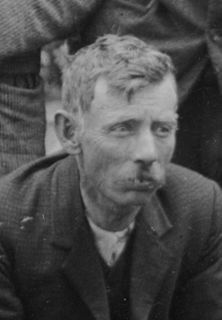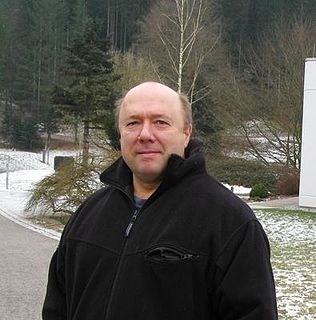| Geoffrey Ernest Stedman | |
|---|---|
| Born | 1943 |
| Residence | New Zealand |
| Alma mater | University of Canterbury Queen Mary College, University of London |
| Known for | Ring lasers |
| Awards | Hector Medal (1994) |
| Scientific career | |
| Institutions | University of Canterbury |
| Thesis | Ion-lattice interactions in rare earth salts (1968) |
| Doctoral advisor | D.J. Newman |
Geoffrey Ernest "Geoff" Stedman (born 1943) is a New Zealand physicist, with research interests including the foundations of relativity, symmetry in quantum mechanics, and ring lasers. [1]

The theory of relativity usually encompasses two interrelated theories by Albert Einstein: special relativity and general relativity. Special relativity applies to elementary particles and their interactions, describing all their physical phenomena except gravity. General relativity explains the law of gravitation and its relation to other forces of nature. It applies to the cosmological and astrophysical realm, including astronomy.

Symmetries in quantum mechanics describe features of spacetime and particles which are unchanged under some transformation, in the context of quantum mechanics, relativistic quantum mechanics and quantum field theory, and with applications in the mathematical formulation of the standard model and condensed matter physics. In general, symmetry in physics, invariance, and conservation laws, are fundamentally important constraints for formulating physical theories and models. In practice, they are powerful methods for solving problems and predicting what can happen. While conservation laws do not always give the answer to the problem directly, they form the correct constraints and the first steps to solving a multitude of problems.
Ring lasers are composed of two beams of light of the same polarization traveling in opposite directions ("counter-rotating") in a closed loop.
Born in 1943, Stedman attended the University of Canterbury, graduating with a BSc(Hons) in physics in 1965. [1] He subsequently went to Queen Mary College, University of London, where he completed his PhD under Douglas Newman in 1968. After post-doctoral research, also at Queen Mary, Stedman returned to lecture at Canterbury in 1971. [2] He retired in 2003 and was granted the title of emeritus professor. [3]

The University of Canterbury is New Zealand's second oldest university.

Queen Mary University of London (QMUL) is a public research university in London, England, and a constituent college of the federal University of London. It dates back to the foundation of London Hospital Medical College in 1785. Queen Mary College, named after Mary of Teck, was admitted to the University of London in 1915 and in 1989 merged with Westfield College to form Queen Mary and Westfield College. In 1995 Queen Mary and Westfield College merged with St Bartholomew's Hospital Medical College and the London Hospital Medical College to form the School of Medicine and Dentistry.
He was elected a Fellow of the Royal Society of New Zealand in 1989, [4] and in 1994 he won the society's Hector Medal. [5] He won the Canterbury Research Medal in 2001. [2]




